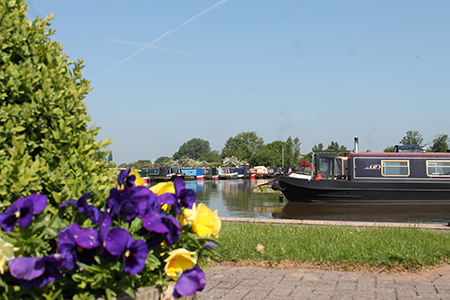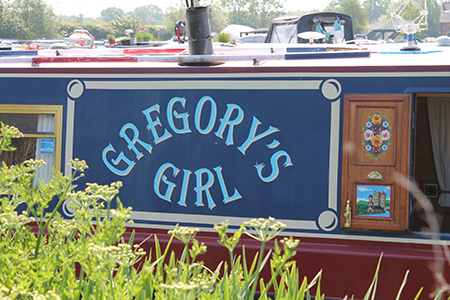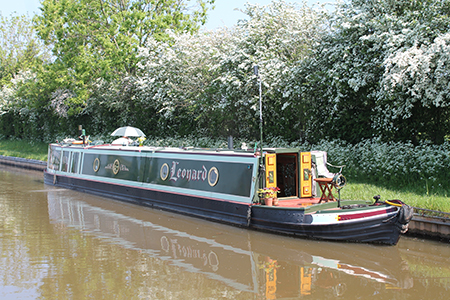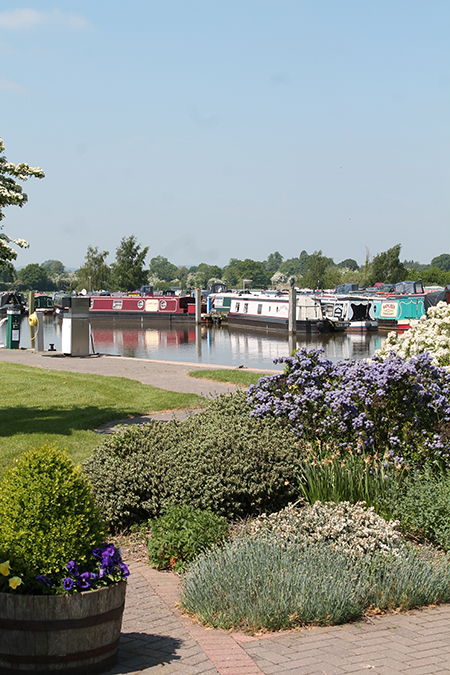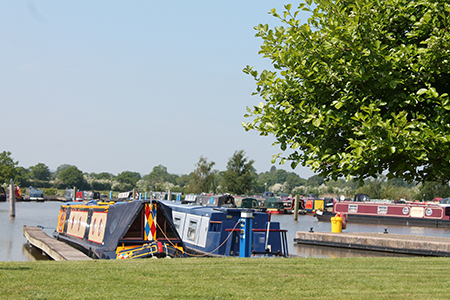Glossary
The rear of the craft.
Replaceable, large piece of metal, usually magnesium, fitted to the hull under the waterline, designed to corrode due to galvanism or electrolysis, instead of the hull. Regular checking recommended every 2 years when the boat is blacked, to see if the anodes need replacing.
Completed in conjunction with the four yearly Boat Safety Scheme (BSS) inspection it details the installed appliances, fuel type and subsequent required ventilation fitted to the boat.
Often pronounced akkyduck by old boatmen. A bridge which carries a waterway over a valley, road or river etc, and constructed to avoid the expense of providing a number of inconvenient locks.
Not an alternative word for a narrowboat, but any canal vessel over seven feet wide. There are over two hundred types of barge that range from dumb lighters, Tom Puddings etc to Liverpool short boats and Mersey/Weaver flats. The term barge is, however, often rudely used by boat builders and repairers to describe a narrowboat which they consider to be of poor quality. Some Dutch style barges have been copied in narrow width versions for use on narrow canals.
The ‘MOT’ of narrowboats, valid for four years.
The number of sleeping spaces available, or the space where a boat is moored.
Literally a pump, electrically or hand operated, to remove any water that has collected inside the bilges.
The front of the boat.
A small device fitted into the gas feed line, usually within the gas locker and which allows the Owner or user to test for gas leaks in the system.
The vertical ‘walls’ inside a narrowboat.
An unpowered narrowboat towed behind another, often seen in the days of the old working boats.
Similar to a caravan arrangement. A chemical toilet with a portable cassette which can be emptied usually without charge, at many sanitary stations in marinas and waterside stations.
The rounded small stern deck forming a ledge projecting over the propeller and shaft.
A style of narrowboat.
The amount of hull which is under the water line.
The higher deck area at the front of the boat below which is usually the gas locker.
Height of the lowest part of the deck above the water level.
Fitted to a craft’s electrical system to help prevent hull corrosion.
A metal (occasionally wood) sliding panel in the rear roof section to facilitate access to the cabin.
A soundproofed exhaust system fitted to the engine which greatly reduces engine noise when running.
The bottom and main part of the boat.
Will charge the on board batteries when connected to a shoreline power supply.
See stretching.
See bottom plating.
Your left hand side when standing and steering the vessel on the stern.
A waterproof cloth cover over a folding (pram) frame which can be lowered and fitted to give weather protection over the rear (usually cruiser style) rear deck area.
A toileting arrangement which allows the waste matter to be pumped to an on-board holding tank before being pumped into a marina or waterside facility for which there is normally a charge.
A set of construction and building standards for new craft and inspired by the E.U. Supporting technical documentation must be maintained. Initial certification lasts for four years after which a Boat Safety Scheme inspection must be carried out.
A fairly recent interior configuration trend whereby the bedroom is situated at the front of the boat and the galley and lounge area are at the rear.
The living area on a boat.
Effectively an extension lead from a shoreside 240 volt electric supply and connected via a boat mounted socket to provide mains electricity to the craft.
The rear of the boat.
Occasionally, the Canals & River Trust will have to close locks or a section of canal for planned or urgent repair work/upgrading. These are referred to as ‘stoppages’.
The area where the hull sides taper at the front and rear of the boat under the water line.
A style of narrowboat.
Where the hull normally sits below the water level.
The floor of a well or cockpit area.
Blocks of magnesium fitted to the hull below the water line which corrode (rather than the hull) due to electrolysis.
Originally the 8ft (approx) after cabin of an old working boat providing the complete living and sleeping accommodation for the crew and their family. Often replicated in modern narrowboats.
Sheet steel welded to existing steelwork on the hull bottom of narrowboats to reinstate the integrity of the base plate to counter the effects of corrosion and/or wear. Often, a complete new base plate is fitted by lowering the boat onto it by hoist, welding to the original and cutting off the excess. When done properly by an experienced welder this work will enhance the durability of the boat and may well increase the value of some (especially older) craft. This specialist work can be carried out by Swanley Bridge Marina.
Generally regarded as the area inside the hull below floor/deck level.
Protective painting of the hull to prevent rusting. Usually carried out every two years, this service is available at Swanley Bridge Marina.
A small propeller mounted transversely in the bow section of the hull to aid sideways manoeuvring of the front of the craft. Can be powered by battery or driven hydraulically off the engine.
A small round porthole fitted to the roof section and fitted with convex glass allowing light whilst retaining privacy.
The hot water tank. Heated by the engine when running or the central heating if installed or by an immersion heater if fitted and connected to a 240volt shoreline supply. Can be a combination of the above.
The protruding edge of the base plate beyond the sides of the hull to give the vessel a wear edge.
A fitting over the front (bow) section of the boat comprising a solid or glazed triangular deck board, supported from the cabin top by plank and finished with a soft waterproof cover, sometimes with zipped access panels and/or plastic ‘glazed’ panels.
The ceiling of the cabin.
A hygenic facility for emptying the contents of a cassette toilet system. Moorers at Swanley Bridge Marina are not charged for this service
The lower deck area at the front of the boat.
Is the kitchen area on a boat.
The edge where the hull meets the cabin.
Demountable or fixed seat fitted to the stern deck for use by the steerer (helmsman).
A skylight fitted to the roof of the cabin which can be opened for ventilation. Some can be used as emergency escape hatches.
An electronic device which converts the 12 volt DC supply stored in the on board batteries and converts it to 240 volt AC supply similar to a domestic arrangement.
A design of bow giving a more pointed nose and a slight S-shaped sweep to the bows. Favoured by traditionalists. Named after Joshua Fellows of Fellows Morton and Clayton carriers fame.
Available for 3, 6, or 12 months. The cost is dependent on the length of the craft. The current rates can be viewed on www.canalrivertrust.org.uk
A method of ventilation through a rectangular hole in the roof covered by a wood or metal box with opening flaps, sometimes glazed for extra light.
A small normally circular window.
A formal dining area with facing bench seats either side of a removable table. Converts to form another double berth and provides useful storage below the seats. Takes its name from the Pullman railway carriages of days gone by.
A method of engine cooling by using water from the canal via a heat exchanger or directly through the engine block.
A style of narrowboat.
The tube at the rear of the boat through which passes the rudder shaft.
A style of narrowboat.
A section of metal attached to the base plate and running rearward to the bottom of the rudder assembly.
The rudder and related steelwork at the rear of the boat.
An alternative to selling your present cherished boat in order to purchase a larger one. The boat is literally ‘cut through’ and a complete new section of any length inserted to form a longer craft. This type of work should only be carried out by craftsman with proven ability and using relevant engineering facilities. Swanley Bridge Marina are well experienced in undertaking this work and can even re-fit the extension with insulation, electric, gas and joinery.
A lever, usually removable, attached to the rudder at the rear (stern) for steering the craft.
A style of narrowboat.
A watertight compartment with lid situated at the rear of the engine compartment allowing access to the propeller to clear any fouling.
A metal L-shaped crank handle used to open the paddles on lock gates. These are available to purchase at the Boathouse.
